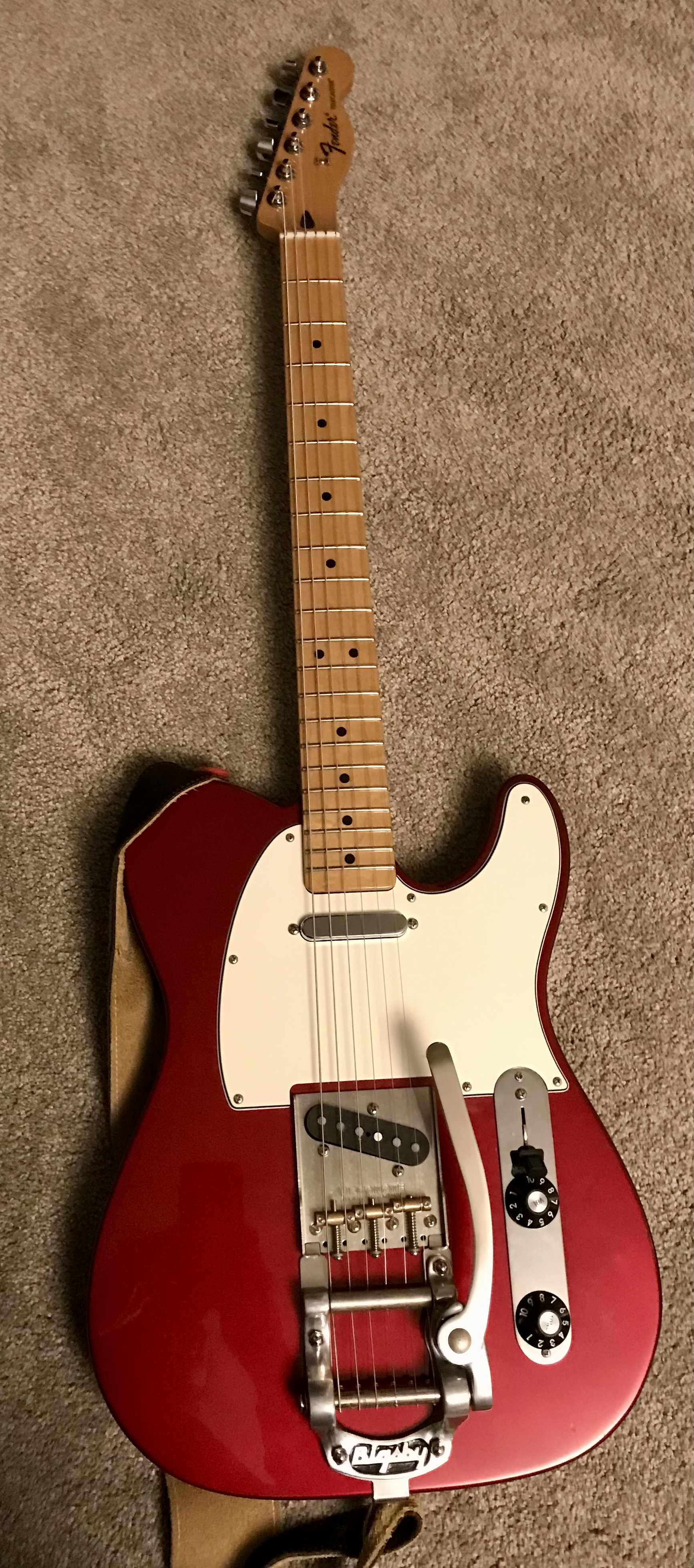Howdy, Stranger!
It looks like you're new here. If you want to get involved, click one of these buttons!
Categories
- 241.4K All Categories
- 22 >> Start Here <<
- 12 New Members
- 8 FAQs
- 86.6K Gear
- 39.5K Guitar
- 3.4K Acoustics
- 1.3K Bass
- 14.6K Amps
- 17.2K FX
- 267 Digital & Modelling
- 765 Other Instruments
- 8.3K Making & Modding
- 420 Gear Reviews
- 107 Guitar Reviews
- 73 Amp Reviews
- 118 FX Reviews
- 87 Other Reviews
- 748 Made in the UK
- 972 Theory
- 1.8K Technique
- 2.1K Live
- 3.2K Studio & Recording
- 2.1K Making Music
- 218 Events
- 15 Guitar Show 2018
- 829 Plug My Stuff
- 105.1K Classifieds
- 41K Guitars £
- 2.8K Acoustics £
- 138 LH Guitars £
- 896 Basses £
- 10.5K Parts £
- 18.3K Amps £
- 34K FX £
- 2.8K Studio & Rec £
- 6.1K Misc £
- 465 Personnel
- 54.7K Chat
- 36.5K Off Topic
- 1.1K Tributes
- 6.6K Music
In this Discussion
Become a Subscriber!
Subscribe to our Patreon, and get image uploads with no ads on the site!
Horns and Guitar
 Acdeezee86
Frets: 28
Acdeezee86
Frets: 28
in Technique
I'm fascinated by Cornell Dupree's playing and have been reading up on him. He says somewhere that he started playing guitar by copying horn lines he would hear on records. I've actually heard this often in reference to r&b/soul...the idea of 'playing the horns'.
Being completely ignorant about horn playing, I just wondered if anyone can shed some light on what this might mean in theory and practice. I get the idea of using your ears (and trust me I am trying!) but what sort of things horn players do that guitarist might typically not?
By extension, playing piano on guitar? what might that look like? iIsuppose interesting chord voicings might be part of it?
Examples always welcome.
Being completely ignorant about horn playing, I just wondered if anyone can shed some light on what this might mean in theory and practice. I get the idea of using your ears (and trust me I am trying!) but what sort of things horn players do that guitarist might typically not?
By extension, playing piano on guitar? what might that look like? iIsuppose interesting chord voicings might be part of it?
Examples always welcome.
0 LOL 0
LOL 0 Wow! 0
Wow! 0 Wisdom
Wisdom
 LOL 0
LOL 0 Wow! 0
Wow! 0 Wisdom
Wisdom Base theme by DesignModo & ported to Powered by Vanilla by Chris Ireland, modified by the "theFB" team.


Comments
When you play guitar the strings are mainly strummed, giving small timing differences between notes. So to emulate a keyboard you need to pluck the notes fingerstyle as a classical guitarist would do. Keyboards also allow “close chording” where notes which are close together in a scale are also close together on the keyboard. A guitarist has to use wide finger stretches to achieve this. (Allan Holdsworth did a lot of this). So to play a 9th chord a pianist might play the root note with the left hand, and the 9th 3rd and 5th on adjacent keys with the right hand. Eg C major9 is C with the left hand, and D, E, and G with the right. The guitarist would find it easier to play C, E, G, and then the D higher up.
When doing same tunes with the small band I signal the horn stabs/runs on guitar.. so in simple terms.. a lot less on the regular beat rhythm playing and a lot more off time short staccato elements and the occasional long chords.. usually at the ends of phrases of transitions. Horns are like decorations that pop in after vocal phrases or at bar starts/ends, If you are strumming, it won’t sound the same. Its all quite loose.. and I like it.